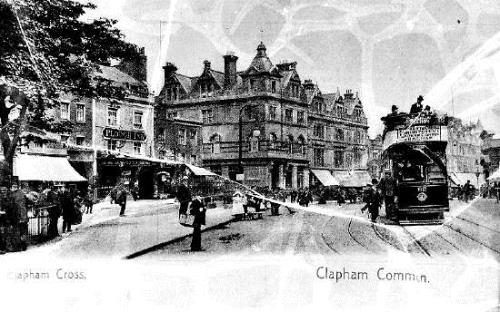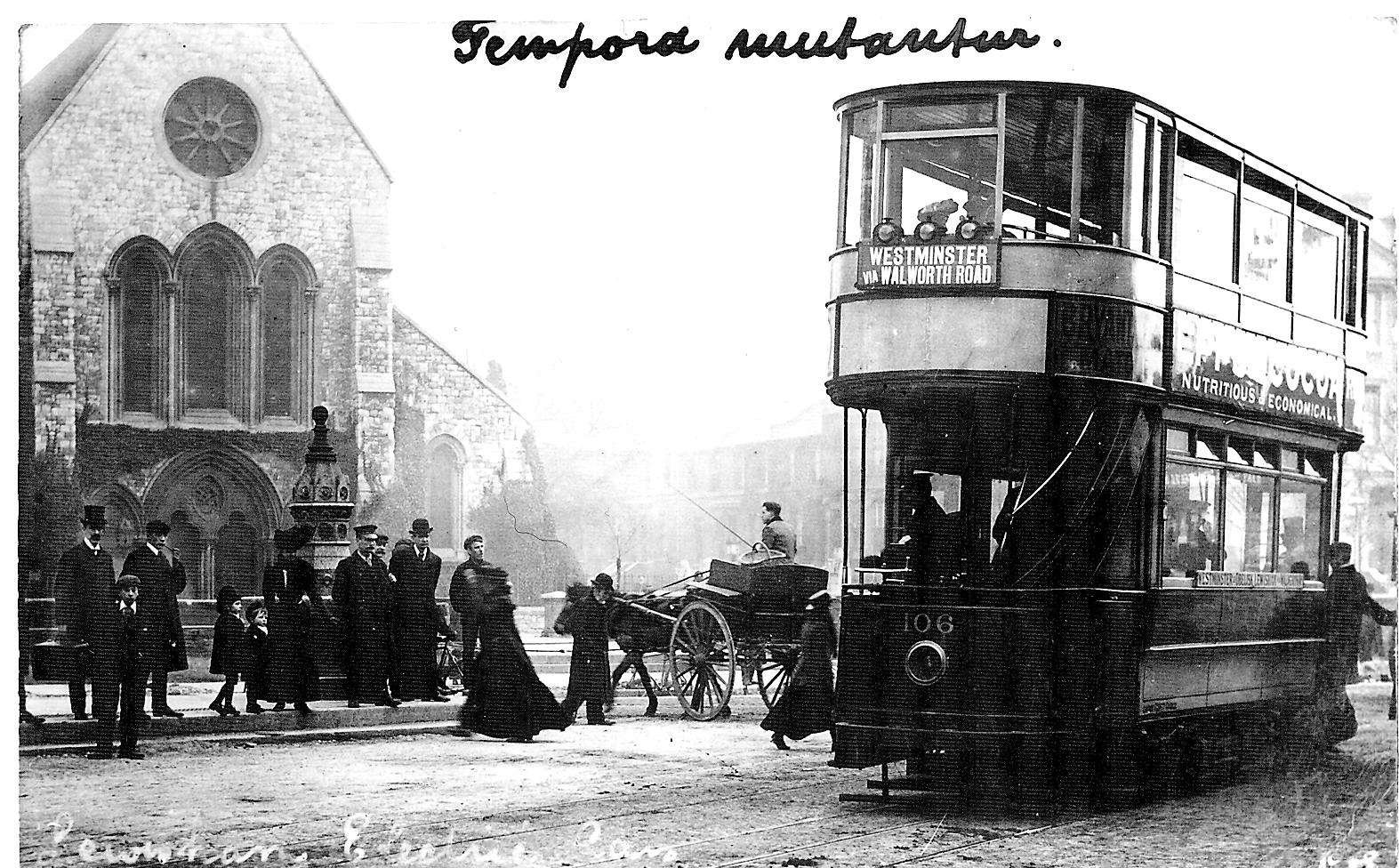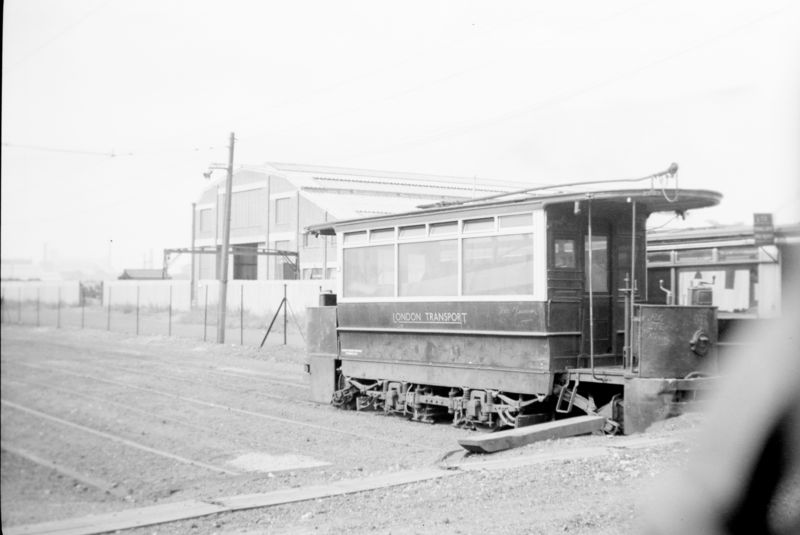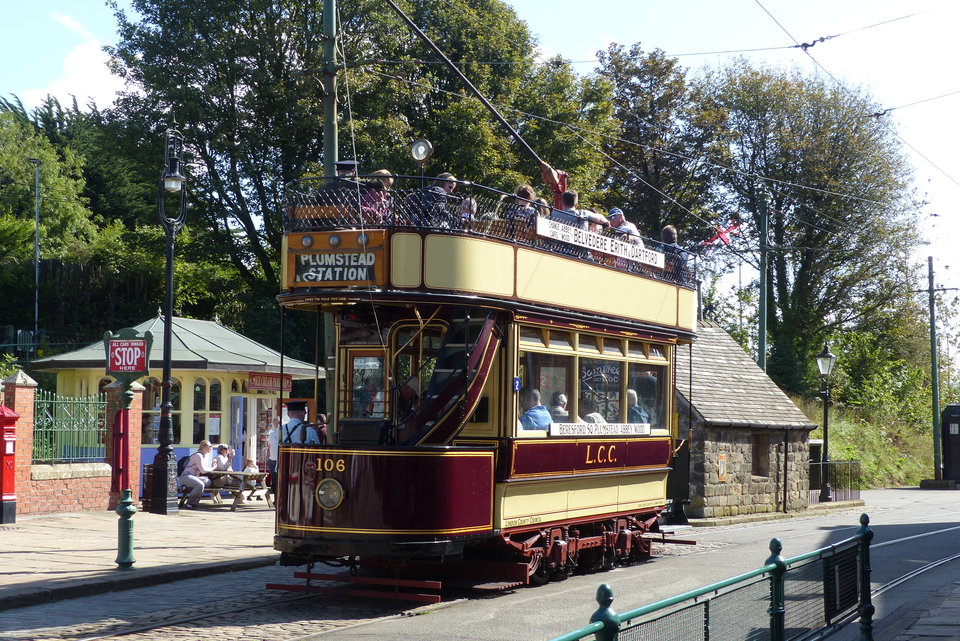London County Council Tramways No. 106
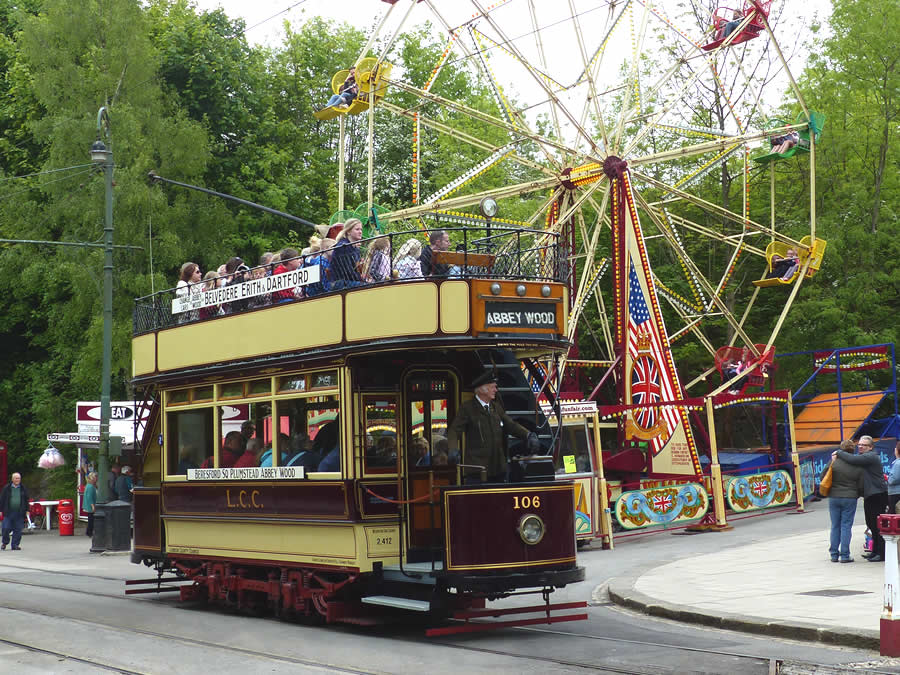
Photo: Jim Dignan
106 is a London County Council “B” class tramcar dating back to 1903 and it represents the typical standard four-wheel open-topped design that was built by established manufacturer Dick-Kerr during the early electric era. This type of tramcar was a standard ‘off-the-peg’ product (known as the ‘Preston’ design) and was supplied to operators all over the country including Leicester, whose number 76 would also have looked remarkably similar when first delivered.
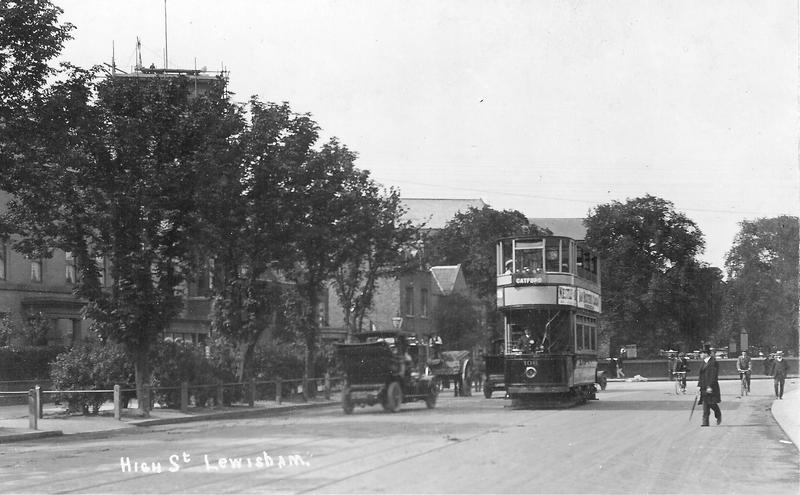
Photo courtesy of LCCTT collection. 106 on High Street, Lewisham. Date unknown but appears to have been taken between 1906 and 1910.
During its early years 106 obtained its power from an underground conduit system by means of a ‘plough’ that picked up the current from an additional slot rail rather than an overhead power-line.
Like the rest of its class, No. 106 was subjected to a number of modifications in the years following its introduction. One of the earliest – on the orders of the Metropolitan police – involved the replacement of the original type of staircase, known as ‘reversed’ stairs, with a type known as a ‘direct’ staircase. One of the problems with the original design (which can still be seen on Leicester 76) is that the staircase almost completely obscured the driver’s nearside rearward vision, which made it very difficult to see anything that might be approaching from behind on that side.
Specification
- Type of tram
- Open-topped double deck four-wheeled electric passenger tram
- Livery
- Crimson Lake and cream
- Seating capacity
- 56 (34 on top deck; 22 downstairs)
- Date built
- 1903
- Manufacturer of body
- Electric Railway and Carriage Co., Preston, for Dick, Kerr & Company
- Manufacturer of truck
- Brill 21E with conduit
- Gauge
- 4’ 8½”
- Motor
- Westinghouse 220 2 x 42hp
- Controller
- Westinghouse T2C
- Current collector
- Trolley (originally conduit)
- Modification
By 1906; the original reverse stairs had been replaced with direct stairs and the car had been fitted with a fully enclosed top cover.
- Withdrawn from service
1925 (passenger service); 1952 (as a works car)
- Subsequent history
Converted into snow broom in 1925 which involved removal of top deck, raising of lower deck to accommodate revolving brooms and the addition of a long trolley pole. Renumbered as 022. Continued in service as a works car until 1952
- Restoration history
Earmarked for preservation in 1951 and initially placed in storage for preservation (including a period at the British Transport Museum in Clapham). The process of restoration commenced in 1971 and was completed in 1983.
- Current status
- Restored in operational condition but not currently commissioned for service.
- Date started operating at Crich
- 1983. Has operated in 29 seasons, most recently in 2021.
- Total mileage covered at Crich
- 26,646. It also briefly visited the East Anglia Transport Museum in 2016.
- Current location
- Depots
- 1903 – 1925Operational on original tramway
- 1925 – 1952Converted to snowbroom and remained operational on original tramway
- 1952 – 1971In storage
- 1971 – 1983Undergoing restoration
- 1983 – 1991Operational at Crich
- 1991 – 1993Undergoing restoration
- 1993 – 1999Operational at Crich
- 1999 – 2001Undergoing overhaul
- 2001 – 2007Operational at Crich
- 2007 – 2013On display
- 2013 – 2015Undergoing overhaul
- 2015 –Operational at Crich

